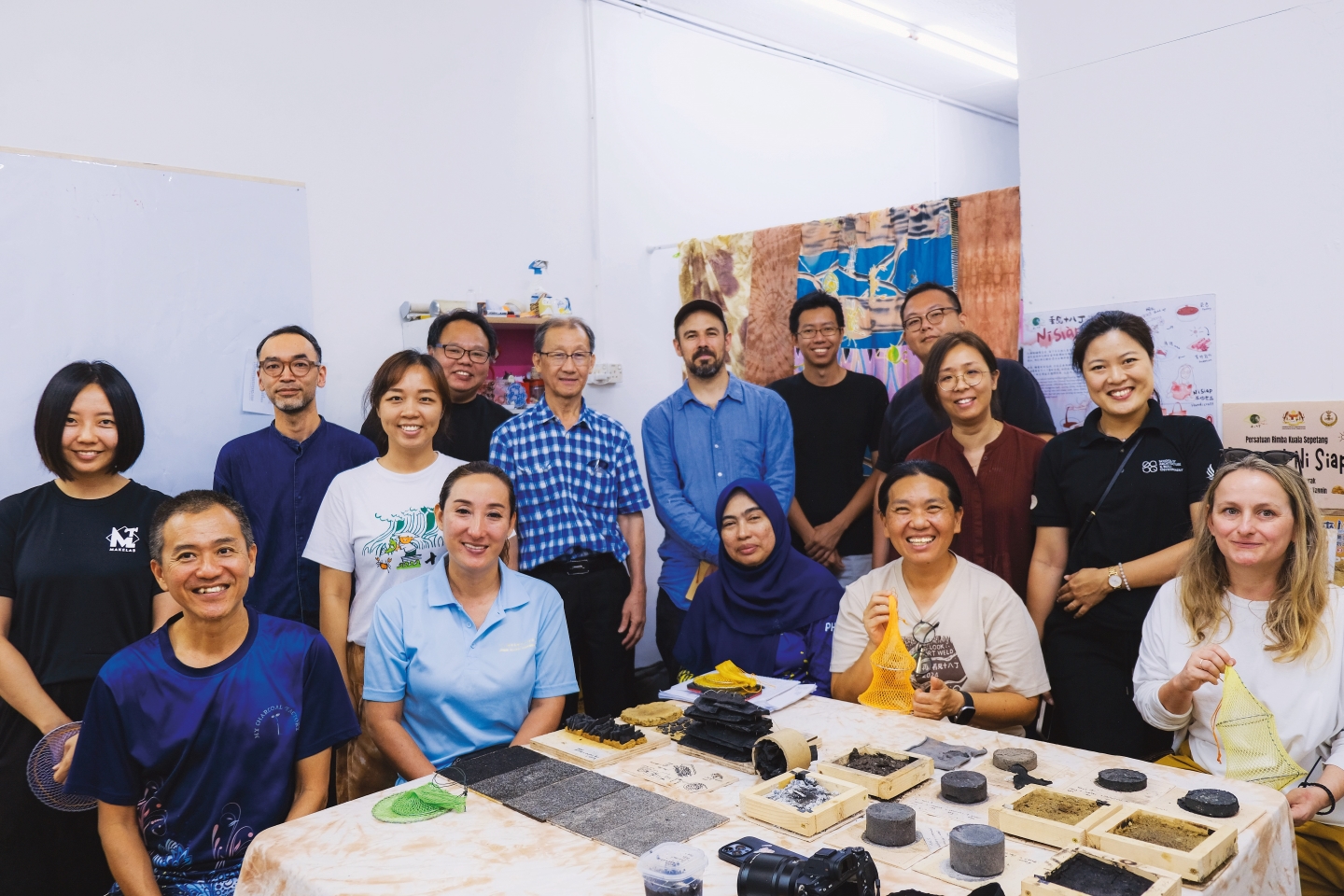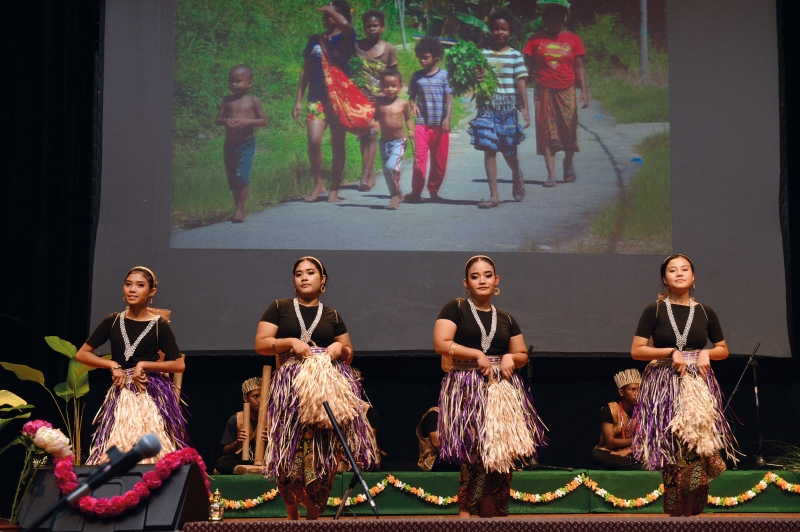
Members of Colllab UCSI with their counterparts from UEL during the latter’s visit to Malaysia last month (Photo: Colllab UCSI)
New online residency programme Syncing Space, currently hosting four learning-disabled and autistic artists from the UK and Malaysia, enables them to try things out in a digital studio, develop ideas and make new work. At the end of the project, what they create will be shared in an online exhibition, Sync Shorts.
Syncing Space is a collaboration between NakSeni, a local social enterprise that supports artists with disabilities, and Sync Leadership, founded in 2008 by Sarah Pickthall and Jo Verrent, UK-based PWD (persons with disabilities) arts and culture leaders who combine theory with personal and group coaching techniques to develop deaf, disabled and neurodivergent leadership in those areas, as well as heritage and media.
This project is among 84 recipients of the British Council’s 2024 Connections Through Culture (CTC) grant programme — and one of eight supported from Malaysia — aimed at nurturing cultural partnerships between Asia-Pacific and the UK. More than RM4.1 million in funding will be given out across the region, enabling artists and organisations to bring their creative visions to life, cultivate international connections and promote the exchange of ideas and creativity.
The other seven new projects that involve UK and Malaysia partners are Heritage Reimagined: Interactive Database and Augmented Reality for Malay Kelingkan and Scottish Tapestry (Francesca Boyd and Institute of the Malay World and Civilisation respectively); Alunan Dengung: Where Seagrass meets electroacoustic Gamelan (Adrian Lee and Rhythm in Bronze); Peat on Earth (Studio 91 Media and Factual TV); Supporting diverse communities to take climate action (Take A Part and Global Environment Centre); Reframe and Resist (The Open University UK and Xiamen University Malaysia); Re:imagining Charcoal (University of East London and Colllab UCSI); and Dancestors (Akademi South Asian Dance and Gerimis Art).
The artists involved in Syncing Space are Andi Miranti and Izzati Shahrin from Malaysia and Charlotte Stephens and Thompson Hall from the UK, chosen based on their art styles, experiences and leadership potential, explains Armani Shahrin, who founded NakSeni in 2020. Its name is derived from anak seni, Malay for “children of art”. Nak means want, which implies the need for art in everyday life.
“We want to celebrate the talents of these gifted youth by giving people a chance to take home a piece of their art via products and merchandise. Our goal is to elevate the status of PWD artists and build a community of individuals who can spread positive influence,” she adds.
Online sessions under Syncing Space began on Feb 13 and will continue weekly until April 4, when the artists’ output will be shown and discussed, in conjunction with World Autism Month.
NakSeni also wants to make cities more inclusive, of the PWD community for a start. It is working to create crowdsourced maps of accessible and safe venues and spaces, so they can move about safely and conveniently.
Community is also at the heart of Dancestors, through which its collaborators hope to address climate change and social justice.
“We connected last year and found our practices intersect with those of Akademi South Asian Dance, especially in dance, music and the climate crisis,” says Wendi Sia, who with Sharon Yap founded Gerimis Art, an archiving initiative that explores Orang Asli narratives from the peninsula. They are working with Luhiew Renaweij troupe led by Semai artist Ronnie Bahari. The £10,000 CTC grant will be split evenly between the Malaysian and UK partners.
Through collaborative research, a residency and sharing of practice and experiences, they will co-construct and co-create a large-scale work-in-progress in two distinct settings in the country: an oil palm plantation and a forest area where the Orang Asli reside or have lived.
“Dancestors seeks to bridge two cultures and South Asian dance with the traditional practices of indigenous Semai communities here. Drawing from ancient and contemporary dance forms, we aim to tell stories of climate change and social justice, disappearing landscapes and their impact on communities. Stories that are poignant, timely and have a bearing on the entire world,” Sia says.
gerimis_project_for_ci.jpg

Re:imagining Charcoal’s is to redefine Kuala Sepetang’s traditional industry through material innovation, community engagement and architectural exploration.Charcoal has a deep-rooted connection to mangrove forestry in that Perak coastal town, and plays a vital role in both local livelihoods and international trade.
By studying the full lifecycle of its production — from mangrove forests to kiln-fired transformation — the project investigates the potential of natural environmental resources such as mud and bark, alongside by-products such as biochar, vinegar, dye, shells and algae to develop sustainable design applications while preserving local heritage.
Colllab UCSI, a collaborative platform for design, architecture education and participatory projects, was initiated in 2020 as a student society and became an NGO two years later after completing several public space projects. It is committed to material innovation and participatory architectural solutions, while University of East London (UEL) has expertise in exploring coastal landscapes and declining trades.
Last month, a UEL team visited mangrove forests, charcoal factories and local communities in Malaysia, after which a material prototyping and testing workshop was held. In June, members from our end of the project will conduct a reciprocal field trip to the UK to study charcoal production methods, enabling cross-cultural learning and knowledge-sharing.
Going back to the land, bogs and peat swamps have a story to share about climate-mitigating habitats. Peat on Earth tells it through 10 written poems and spoken word films by young poets Matt Sowerby and Kuala Lumpur-based Kimchi Lai, together with British and Malaysian moviemakers.
For more on the CTC grants programme and recipients, see here.
This article first appeared on Feb 24, 2025 in The Edge Malaysia.


